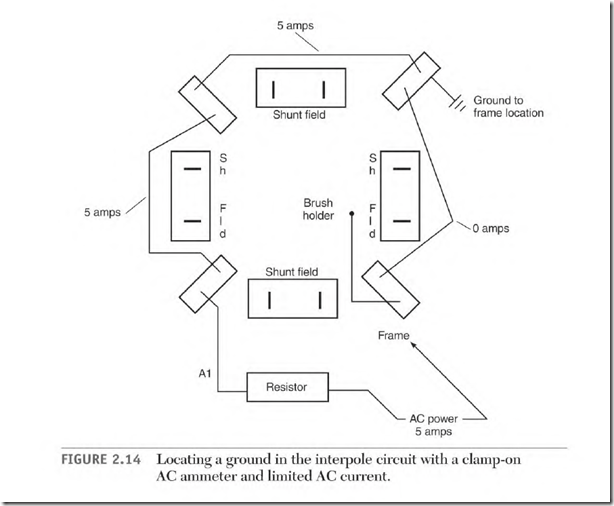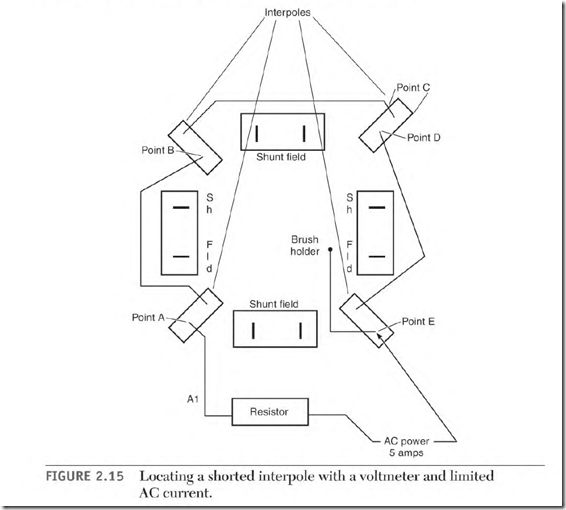For safety reasons, a low-voltage transformer (with high-ampere capacity) and a current-limiting resistor should be used. This will isolate the DC machine from the equipment ground circuit of the AC power source. The
transformer should have enough power to provide a readable number of amperes. A solder gun is sometimes used but can overheat.
Fasten one line of the voltage source to the frame and the other to an interpole lead. Apply a small number of amperes to the circuit. With a clamp-on ammeter, check the amperes at each coil-to-coil connection. The connection that shows no reading (Fig. 2.14) will be beyond the faulty coil. Disconnect this coil, and check for a ground between it and the previously tested coils. If the end coil contains the ground, feed the circuit from the brush holder connection, and proceed toward Al.
The decision to repair or rewind a single interpole will depend on the age and condition of the machine.
If any series circuit components show signs of heat damage from high current, all coils in the circuit should be rewound or reinsulated.
5 amps
Locating a Shorted Interpole Using the AC Voltage Drop Test
A 120-volt AC voltage source with a current-limiting resistor and a voltmeter can be used for this voltage drop test. Limit the amperes to the armature nameplate rating or less. AC works better because of inductance which is explained in Chapter 3.
 The armature should not be included in the AC test circuit.
The armature should not be included in the AC test circuit.
At least two interpole coils in series are needed for this test method. The coils are compared, as illustrated in Fig. 2.15. Take a voltage drop test across each coil. (A lower voltage is found across a shorted coil.)
Interpoles
This voltage drop test could result in the following “smoke test” if enough amperes are used.
Locating a Shorted Interpole Using the Smoke Test
A shorted turn or two can be very hard to detect when large wire is used in the interpole coils.
The smoke test can be used to locate shorted turns. Use 120 volts AC for the test. Limit the amperes to the armature circuit’s nameplate value with a resistor. (Make sure the armature isn’t included in the test circuit.)
A high circulating current will be transformed into the turns within a short, causing them to smoke almost instantly. Testing should be stopped before the rest of the coils overheat.
If the coils are constructed of flat wire, they can be reinsulated (if they aren’t melted or fused together).

